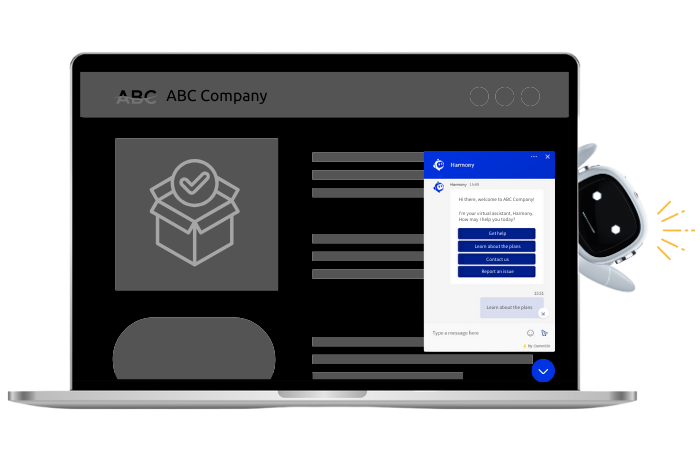Does customer delight lead to customer loyalty? Many managers would say yes – the concept of delighting customers to cement loyalty has been ingrained into many people’s thinking, and has become such a commonly held belief that many organizations do not even question it.
But for many businesses, this can be a poor return on investment, with many resources being spent on a never-ending quest to go above and beyond.
The ugly truth is that beyond meeting customer expectations, delighting customers has a minimal impact on loyalty. In fact, customers are more likely to punish a company for poor service than they are willing to patronize a business because of exceptional service.
Let’s explore the reasons why customer delight doesn’t always ensure customer loyalty, and what strategies you can use instead.
Are You as Delightful as You Think?
The way a company perceives itself and its initiatives are usually worlds apart from the views of their customers. In 2005, Bain & Company surveyed 362 firms. 80% of these firms believed that they were delivering a “superior experience.” Unfortunately, only 8% of their customers had that same belief. There is obviously a significant disconnect between the two sides, meaning that while companies are striving to provide delightful customer experiences, their customers are a lot more skeptical of their ability to do so.
Many companies believe that loyalty increases when companies meet customer expectations. Most also believe that exceeding expectations dramatically increases customer loyalty. Unfortunately, research shows this is far from the truth: exceeding customer expectations has marginal effects on levels of customer loyalty.
Matthew Dixon writes about this extensively in his book, “The Effortless Experience”. Dixon explains that delighting customers only happens around 16% of the time. While this might be acceptable, operational costs to achieve that are usually in the 10 – 20% range.
Delighting customers costs money – significant amounts of money. And while exceptional experiences might be a fantastic marketing tool, it can be short-sighted for many businesses to focus their entire CX strategy on aiming to delight their entire customer base.
Because unhappy customers tell twice as many people about their experiences than happy customers, when forming a customer experience strategy, it can make more sense for operations to play more of a ‘defensive’ role than going on the charm offensive. Removing obstacles and providing customers with a smoother experience often provides a lot more ready benefits than striving to provide delightful experiences.
Creating customer delight tends to feel good, but it needs to be balanced against the bottom line.
What Does this Mean for Multichannel Efforts?
One of the most significant ways that companies can remove obstacles and provide smooth experiences is through providing service to customers on the channel of their choice.
To cast your net wider and satisfy a larger number of customers, multiple contact options need to be in place. Enterprise companies need to offer service and communication via email, social media, telephone, live chat, and self-service, to provide a full suite of contact options specific to different customer demographics and circumstances.
But to build a truly effective multichannel strategy, efforts should be spent on evaluating customer journeys and determining what steps can be taken to create a better experience across all of these channels. Blindly adding channels can increase, rather than decrease, customer effort, hurting your chance of securing customer loyalty.
For example, a common trend is the creation of Knowledge Bases (KBs) and self-service portals. Organizations often invest significant time and effort into creating KBs, only to end up with a portal that does not truly address customer issues. Articles are often difficult to understand, hard to navigate, full of jargon, off-topic or out of date, not providing customers with the answers they need. Research has shown that a full 57.7% of callers have already visited the company website, and presumably not found the help they were after. In fact, 35.5% of callers were on the company website while concurrently talking to the agent.
AI-Powered Live Chat That Empowers Agents and Impresses Customers
Enhance every customer interaction with the most advanced, AI-driven live chat solution on the market.
Learn more
Solution
Research from the Corporate Executive Board also demonstrates this – only 16% of customers value the choice of the channel over the ease of resolving a problem. This group prioritizes using their preferred channel over how quickly the problem is rectified.
Companies should, therefore, aim at solving issues quickly with the least effort, as the most important criteria.
From the data, we can also deduce that neither group likes bouncing around channels. An example of this is referring people to your product website forcing them to leave the self-serve platform, or giving a link to the self-serve platform while communicating on email or live chat. Forcing a channel switch is rarely a good option if you want to ensure quick and effortless resolutions.
How Customer Service Can Fuel Customer Disloyalty?
Is your call center service hurting your brand loyalty? We’ve already explored that instead of telling lots of people about excellent service, customers are more open to taking revenge against a company with lousy service by telling their friends not to patronize it, or going on social media to complain about it. And customers LOVE to complain about call centers.
Ask any call center manager if running a call center is easy, and the answer is a definite no. Telephone service is fraught with potential pitfalls, increasing the risk that service given is anything but quick and smooth. Even the best-meaning agents can give out incorrect information. The nature of verbal communication means that clear communication can be complicated by word choice, jargon, accents, tone and pace, leading to misunderstanding and miscommunication between agent and caller. Human issues aside, customers often get frustrated with the material problems of call center contact – frustrating IVR options, being on hold, telling multiple people about the same problem, and being transferred through endless departments are all sources for customer frustration.
If you don’t watch out for these pitfalls, your phone support might be a main driver of customer disloyalty.
Your customers don’t want to talk to you – although your company might be happy to talk to them! Remember that the best customer support is no customer support, that is, an optimal service situation is when your customers can figure out the answers they need without needing to reach out.
What Should You Do Instead?
Simplicity is essential, and you should try to solve customer problems as quickly as possible. Solve those things, and then you can focus on delighting your customers.
One way to do this is by empowering your agents to be knowledge managers rather than factory workers. Sharing knowledge in an internal knowledge base allows agents to access information for issue resolution quickly, and ensure that they’re all giving out consistent information. Of course, make sure that knowledge base is also updated regularly.
Focus on improving customer satisfaction by conducting customer surveys. Use the information from the surveys to help build your processes – as well as being the backbone of journey mapping sessions.
The protocols used by your agents should negate the need for repeating information or switching channels. Also, if you are going the knowledge base route, make sure that problems are solved within the platform so that fewer calls are coming from that channel.
It’s important to remember that while a positive impact might not stick, a negative one definitely will.
You don’t have to delight your customers. While above and beyond service intuitively feels right, providing quick and smooth experiences will satisfy more customers, who at the end of the day, just want their query answered.
How does your organization view customer service? Are they still trying to delight every single caller and going that extra mile? Let us know in the comments below.
Live Chat Benchmark Report 2025
Discover the latest live chat benchmark data to understand how well your team is performing compared to the competition and where it needs to improve.
Download the report
Report








